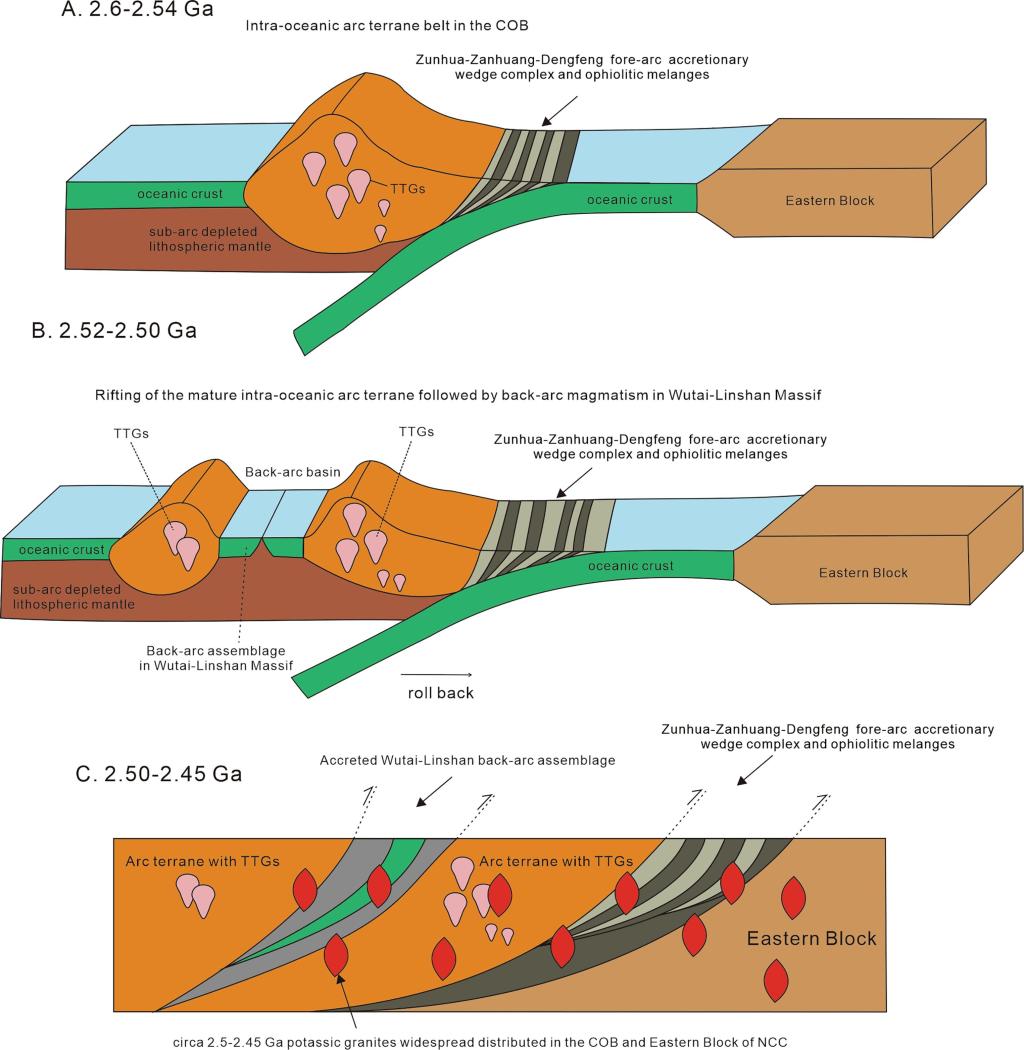Growth of the Central Orogenic Belt, North China Craton through accretion of different Neoarchean arc terranes: Perspective from the Linshan complex
Ziyu Donga, ,, , , , ,
aState Key Laboratory of Geological Processes and Mineral Resources, Center for Global Tectonics, School of Earth Sciences, China University of Geosciences, Wuhan, Hubei 430074, China
bSchool of the Environment, University of Windsor, Windsor, Ontario N9B 3P4, Canada
The onset of plate tectonics and crustal growth processes in the early Earth have been controversial scientific issues in the geoscience. The North China Craton (NCC) preserves widespread 3.8–2.5 Ga rocks, providing an ideal place to understand early continent formation and evolution. The Linshan complex located in the southern segment of the Central Orogenic Belt (COB) of the NCC, is mainly composed of TTG (tonalite-trondhjemite-granodiorite)-diorite gneisses and metamorphic volcanic-sedimentary units dominated by gabbro, basalt, basaltic andesite and biotite-plagioclase gneiss. Detailed mapping on the scale of 1:100 of a structural transect shows that the Linshan complex has mainly experienced two major deformation events including top-to-the-SE thrust faults and late NE-trending high-angle normal faults. Detailed zircon U-Pb dating shows that gabbro, basaltic andesite, and TTG gneiss mainly formed at ca. 2.52–2.50 Ga. Gabbros and basalts display enrichment of LREE and negative Nb and Ta anomalies, and basaltic andesites display mixed MORB-IAT geochemical affinities. Basalts and basaltic andesites are members of the Nb-enriched basalt series with high absolute Nb contents (>6 ppm). TTG gneisses are geochemically divided into high-pressure and low-pressure TTGs. High-pressure TTGs are characterized by high ratios of La/Ybcn (26.29–45.73) and fall into the adakitic region in the La/Ybcn-Ybcn diagram. Considering the close contact with Nb-enriched basaltic series, it is proposed that high-pressure TTGs may have formed by partial melting of a subducting oceanic slab with garnet and amphibole and/or rutile as residues. Low-pressure TTGs are characterized by low ratios of La/Ybcn and Sr/Y with marked negative Eu anomalies, indicating partial melting at shallow crustal levels. Regional tectonic relations have defined the Neoarchean Dengfeng island arc-forearc accretionary complex to the east of the Linshan complex. Thus, we propose that the gabbros-basalts-basaltic andesites in the Linshan complex mostly formed in a Neoarchean suprasubduction back-arc basin by rifting of a TTG-dominated island arc terrane. The final closure of the back-arc basin resulted in their tectonic juxtaposition forming thrust-imbricated structures. There may have been several Neoarchean “forearc-island-arc-backarc” systems in the NCC that are similar to modern accretionary tectonic orogens, indicating that plate tectonics has been in operation since at least 2.55–2.50 Ga.
Original source: Dong, Z. Y., Deng, H., Kusky, T., Polat, A., Peng, G.L., Zhang, H., Wang, L., Wang, J.P. (2024). "Growth of the Central Orogenic Belt, North China Craton through accretion of different Neoarchean arc terranes: Perspective from the Linshan complex." Precambrian Research 412(107555). https://doi.org/10.1016/j.precamres.2024.107555

Figure 13. Tectonic model of interpreted geodynamic evolution for the COB with the formation of ca. 2.6–2.5 Ga Zunhua-Zanhuang-Dengfeng fore-arc accretionary wedge complex and ophiolitic mélanges (Kusky et al., 2016) and related Wutai-Linshan arc-backarc systems including those developing in the Hengshan-Wutai-Fuping complexes (Wang et al., 2004, Wang, 2009), the Zunhua-Qinglong terrane of Eastern Hebei (EH) (Bai et al., 2015; Guo et al., 2015, Fu et al., 2016) and Linshan-Dengfeng complexes (Deng et al., 2020; this study).